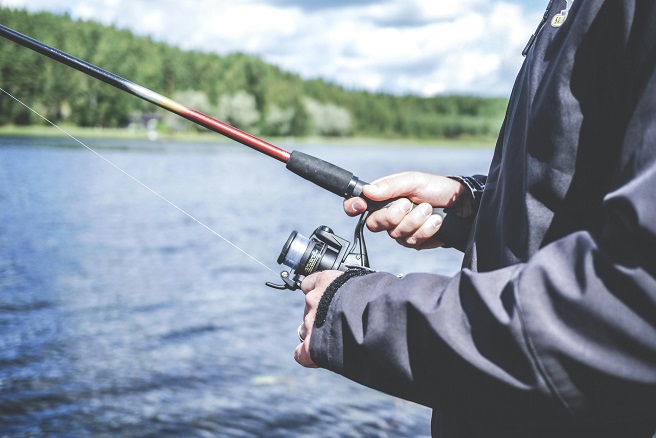In the past few years, the recreational fishing industry has taken a new turn, changing from a quiet hobby practiced during the weekends to a sport that has taken the world by storm.
Many anglers now depend on their preferred fishing app to monitor conditions, find the best spots, and strategize as modern technology continues to have a larger impact.
The competitive fishing industry has skyrocketed in fame, attracting huge audiences and providing significant cash rewards that can exceed millions.
Today’s professional fishermen rely on conventional knowledge combined with a fishing weather app to have every edge possible in these important competitions.
Overview of Major Competitions
1) Bassmaster Classic
Location: Different places throughout the United States (changing every year).
Established in 1971, the Bassmaster Classic has gained the title “Super Bowl of Bass Fishing” after fifty years of reputable competition.
Format: A three-day tournament accompanied by a daily weigh-in where anglers focus on the largemouth and smallmouth bass.
Participants: 52 skilled professional fishermen who secure their positions through different B.A.S.S. competitions.
Prize: More than $1 million in total prize money, with the winner getting around $300,000.
Distinctive Factors: The tournament is accompanied by a large outdoor expo that attracts more than 100,000 fishing enthusiasts.
The competition has turned into a place where new fishing methods and technologies are tested, frequently establishing new trends in the recreational fishing sector.
2) FLW Tour (Now MLF Pro Circuit) FLW Tour (Now MLF Pro Circuit)
Location: Various venues throughout North America.
History: Originated in 1979 under the name Operation Bass by Irwin L. Jacobs.
Format: Series of tournaments throughout the year leading up to a final championship event.
Participants: Skilled anglers taking part in a qualifying tournament.
Award: $135,000 is available for winners of regular season competitions, while championship prizes can go up to $300,000.
Unique Aspects: Initial with the catch, weigh, release format with the real-time scoring system.
Ever since the tour was commissioned, it has unleashed new tournament concepts and broadcasting technologies that have helped bring the essence of competitive fishing to the fans.
3) International Game Fish Association (IGFA) World Record Championship
Location: Multiple international venues.
History: Since 1939, IGFA has been the official keeper of world records.
Format: Competing for breaking existing world records all year long.
Participants: All anglers within the rules and regulations of the IGFA are open.
Prize: Different sponsored prizes and being recognized as world record holder.
Unique Aspects: Contains over 1,200 species from multiple line class categories.
IGFA manages the most comprehensive database of fishing records in the world and maintains the standard for ethical angling practices.
4) Bisbee’s Black & Blue Marlin Tournament
Location: Cabo San Lucas in Mexico.
History: Established in 1981, it has developed into the most lucrative fishing competition globally.
Format: Three-day competition focused on catching black and blue marlin.
Participants: Recreational and professional anglers from around the world.
Prize: Purse usually totaling over $4 million.
Unique Aspects: Renowned for its stringent conservation guidelines and substantial discretionary prizes.
The competition has grown to be a fundamental part of marine conservation initiatives in the area, endorsing sustainable fishing techniques while upholding its competitive nature.
5) Hawaiian International Billfish Tournament
Location: Kona, Hawaii.
History: Founded in 1959, dubbed the “Grandfather of All Big Game Fishing Tournaments”.
Format: Five-day event centered on catching Pacific blue marlin.
Participants: Groups hailing from more than 40 nations.
Prize: Different monetary rewards and respected team honors.
Unique Aspects: Special scoring method encouraging catch and release techniques.
The competition has been vital in solidifying Hawaii as a top spot for big-game fishing and has made a significant impact on both the local economy and the fishing community.
6) White Marlin Open
Location: Ocean City, Maryland.
History: Originating in 1974, the tournament has expanded to become the biggest billfish competition globally.
Format: Tournament spanning five days aimed at a variety of species.
Participants: More than 400 boats and over 3,000 anglers.
Award: Purse exceeding $6 million in total.
Unique Aspects: Ocean City has secured its reputation as the “White Marlin Capital of the World”.
The competition serves as a significant economic force in the area, drawing competitors and viewers from all over the world and advocating for sustainable fishing methods.
7) World Fishing Network’s Tournament Series
Location: Multiple venues throughout North America.
History: Created as a space for novice and experienced fishermen.
Format: Various species and fishing styles are featured in multiple events held throughout the year.
Participants: Welcoming fishermen of every expertise level.
Prize: Different prize sums based on the specific event.
Unique Aspects: Offers beneficial visibility for aspiring anglers and acts as a pathway to professional tournaments.
The show has made competitive fishing more accessible by giving amateur anglers the chance to participate in higher-level competitions.
Conclusion
The competitive fishing industry is expanding and changing, attracting anglers from around the world.
These competitions are not just about competing but also about honoring the tradition of fishing, advancements in technology, and raising awareness for conservation.
From the esteemed Bassmaster Classic to the profitable Bisbee’s Black & Blue, every tournament adds to the diverse fabric of competitive fishing culture.
The blend of expertise, tactics, and the element of surprise in the sport ensures that fishing contests remain thrilling occasions that engage both competitors and viewers.
These tournaments act as stages for anglers worldwide to innovate in fishing methods, conservation efforts, and community engagement as the sport progresses.
The outlook for competitive fishing appears promising, as new technologies and formats are being introduced to make the sport more accessible and thrilling than in the past.
